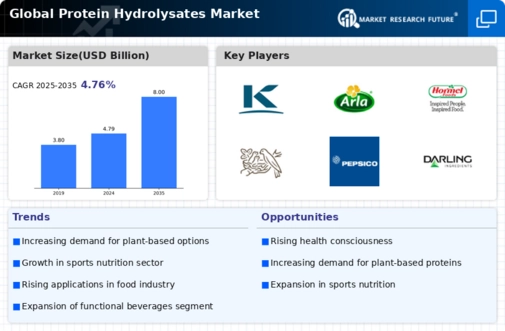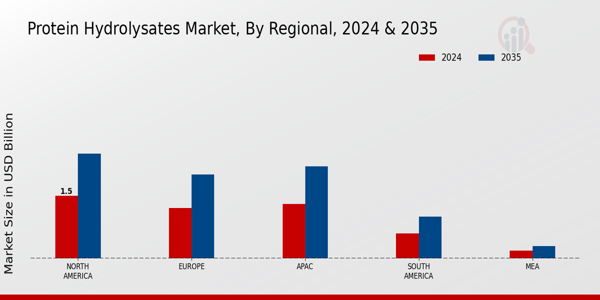Market Share
Protein Hydrolysates Market Share Analysis
The market of protein hydrolysates is now growing significantly as a result of increased demand of protein-containing items in a variety of industries, including food & beverages, medicines, and cosmetics. As rivalry ramps up within this fast-paced industry, organizations are resorting to tactical positioning strategies to gain and keep a substantial share of the market.
Product differentiation is a common technique to market share positioning. Companies seek to differentiate the protein hydrolysate products by emphasizing unique qualities such as customized recipes, greater nutrient content, or specific uses. For example, some firms produce protein hydrolysates exclusively for the market for sports nutrition in order to meet the needs of competitors and fitness enthusiasts. This differentiation technique enables firms to define specific target markets and areas of strength.
Another effective market positioning method is to target certain sectors or applications. Since protein hydrolysates have so many applications, companies carefully position their products to satisfy the unique needs of different sectors. Some focus on the beverage and food sectors, using protein hydrolysates to improve the flavor as well as the nutritional value of beverages, snacks, and substitute meals. Another potential target is the pharmaceutical business, which employs protein hydrolysates in nutritional supplements along with prescription medications. This tailored strategy allows firms to meet the specific needs of distinct industries, hence increasing their market share inside specialized marketplaces.
Competitive pricing is a crucial technique for market share positioning. Companies strive to achieve a balance between providing superior protein hydrolysates and retaining competitive pricing. Companies may promote themselves as economical alternatives while maintaining product quality by monitoring market trends and knowing rivals' pricing practices. This strategy attracts price-sensitive customers and aids in attaining a greater market share, especially in price-driven categories.
Competitive collaborations and partnerships play a vital role in deciding market share throughout the Protein Hydrolysates Market. Companies routinely form agreements with research institutes, colleges, or other industry players to boost their R&D capabilities. Companies that stay on the forefront of innovation can develop novel protein hydrolysate formulations with specific functionalities, therefore boosting their market position. Collaborations can also extend to channels of distribution, allowing businesses to broaden their reach and attract a larger client base.
Geographical expansion is another technique used by businesses to gain market share. Companies may choose to position themselves as significant participants in new markets by finding untapped locations with rising protein hydrolysate demand. To ensure a significant market presence, this growth may need the establishment of new manufacturing facilities, distribution channels, and relationships with local players.


 Source: Primary Research, Secondary Research, MRFR Database and Analyst Review
Source: Primary Research, Secondary Research, MRFR Database and Analyst Review











Leave a Comment